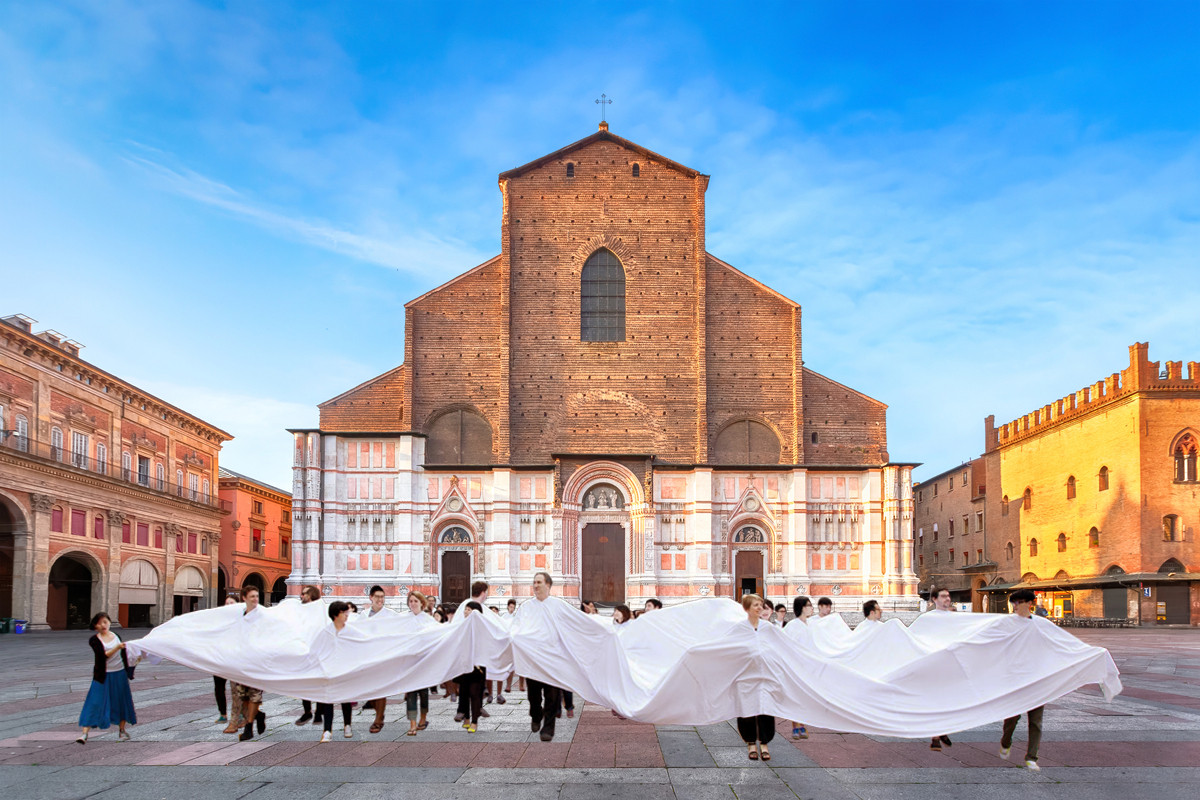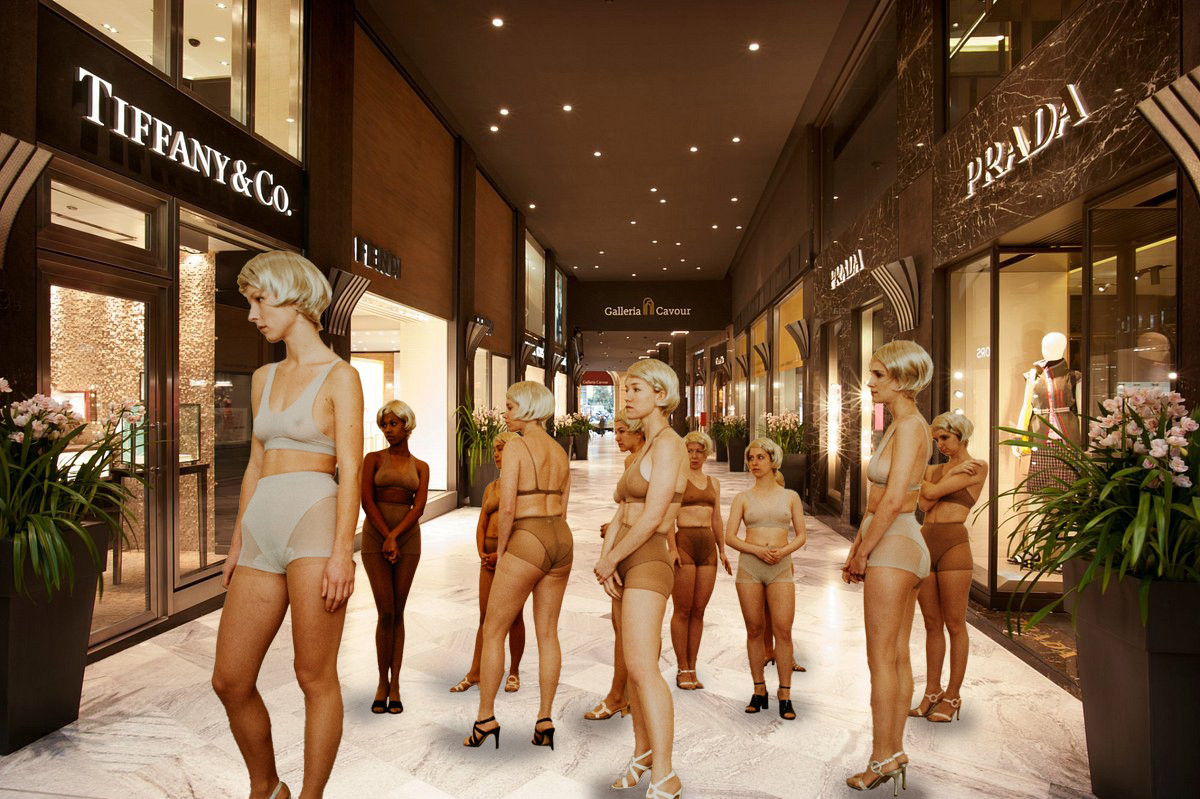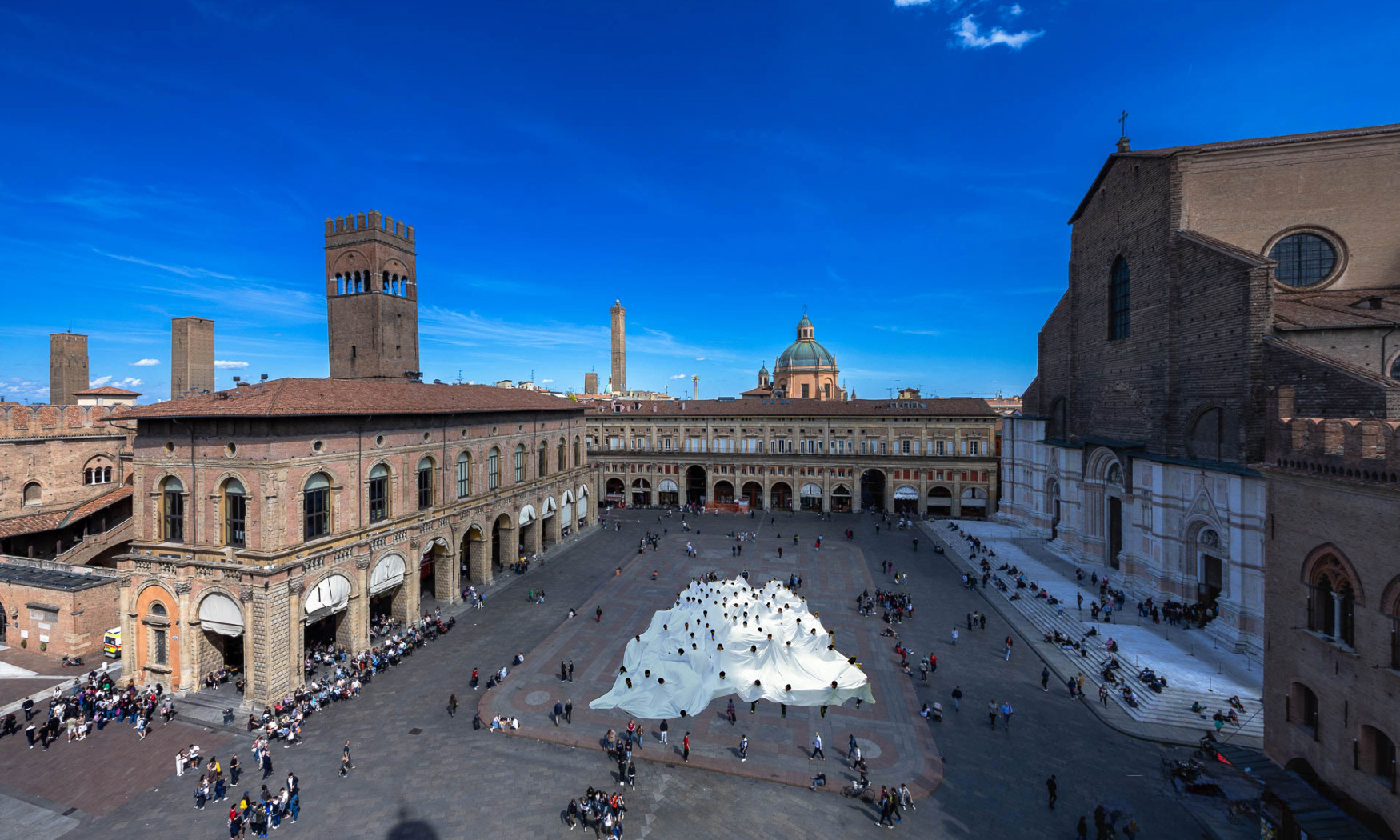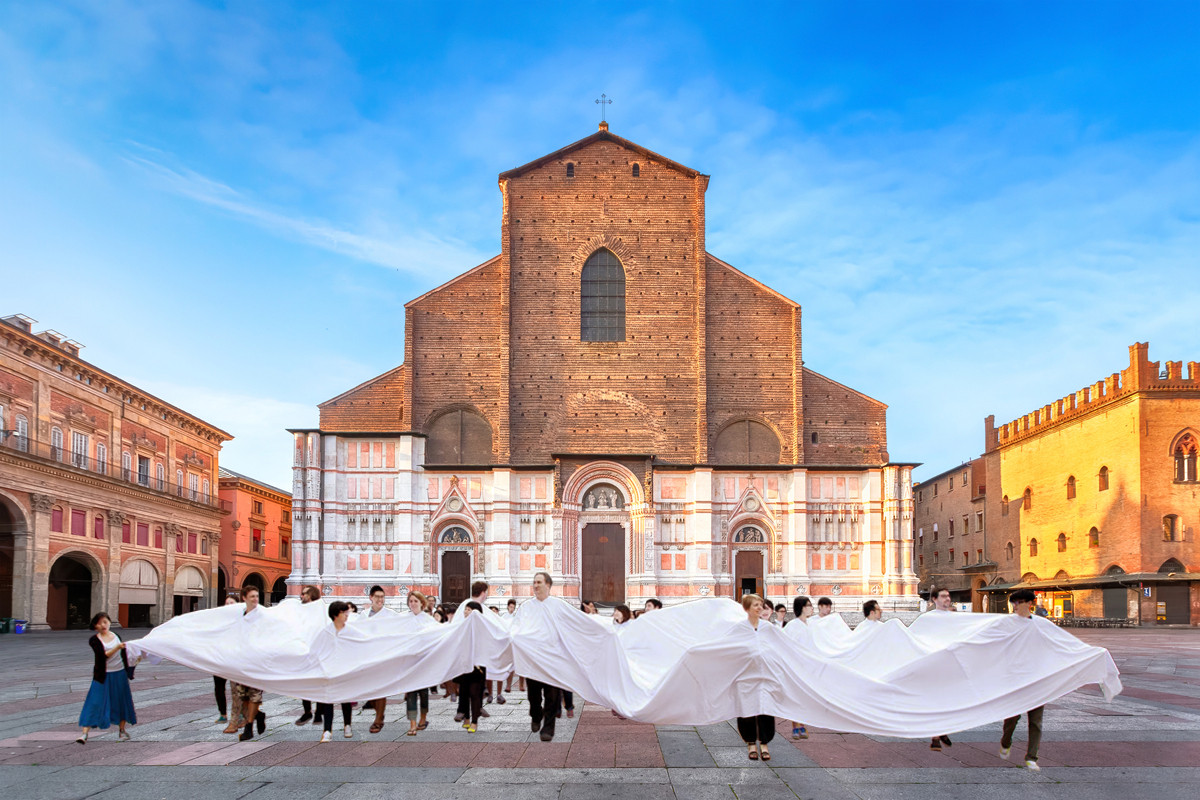ARTWORKS DESCRIPTION
1. LYGIA PAPE — DIVISOR
Divisor is an art work by Brazilian artist Lygia Pape, presented for the first time in Rio de Janeiro in 1968. Approaching the characteristic poetics of the neo-concrete movement, its strength derives from the participatory aspect it contains: the public can actively take part of a collective action that consists of an enormous piece of white fabric through which members of the audience poke their heads while their bodies remain enveloped in the fabric. In this way a kind of living organism is formed, in which the movement of its individual cells (the participants) join together in an organic motion. The work is reproposed in Piazza Maggiore, a vast space, traversed by bodies of various kinds, some passing through, others contemplating the glimpse of history that the place offers. Here, the extension of this breathing white expanse interrupted by bodily joints that create its own movement and the rhythm of its breath, represents a way of appropriating public space and bringing about a creative transformation of urban life.

2. VANESSA BEECROFT — VB26
VB26 is part of a series of performances created by the artist Vanessa beecroft since the 1990s. The artistic research that lives within this representation draws its lifeblood from themes such as female identity and its representation in the media from a body-centred perspective. The composition is articulated around bodies placed in precise formations. The suspension of the dynamism of the bodies caught in a sort of compositional spider’s web facilitates the sensation of witnessing an alternation of planes where the performers are both subjects and objects. This last feature of the work, reenacted in Galleria Cavour, seems to bounce off the visual plane of the viewer reinforced by the reflection of the bodies on the shop windows and the polished gallery floor, turning a quiet shopping tour into a movement more triggered and aware of the place you cross.

3. RUPI KAUR — POETRY READING
Rupi Kaur is a Canadian poet, writer and illustrator of Indian origin. In her poetry, although through a genuine and sometimes gentle expressiveness, one can grasp profound reflections on themes such as sexual abuse, femininity, love, self-care. Between her words, effectively laid on the pages that receive them, it is again possible to identify the focus of the writing in the body, in the experiences that run through it and shape its interaction with its surroundings. The echo of her voice permeating the space of Piazza Verdi, places the square in a suspended dimension that invites to enact a reflection that allows to reposition oneself along lines of desire and emotion rooted in the body, a mechanism that is sometimes difficult to enact in a space of high social frenzy.

4. JENNY HOLZER — INFLAMMATORY ESSAYS
Jenny Holzer is a neo-conceptual, or better a urban guerrila style artist. The key points of her works are the distribution of words and ideas in public spaces. The artist uses public space as the canvas for her works. Inflammatory essays consist of posters of various colours filled with short strings of provocative political dictations and composed in all capital letters to resemble newspaper headlines, the posters could be read as Maoist rants, right-wing rants or thoughtful philosophies, depending on where one began or ended. Embedded in the stone gaps of the walls and railings of the Montagnola park, these collages of words imprinted on brightly-coloured paper supports are catalysts for the attention of those who pass through that space. In this way, starting from the reflections that the texts can provoke, a more critical look at the place itself is stimulated.


5. TRACEY EMIN — BUT YEA
But yea is a work by British artist Tracey Emin, who has been creating neon text pieces since the 1990s. It consists on a lithograph based on an installation of the same name featuring her signature hand-scrawled aesthetic and misspelling of the word "yeah". The text element merges with a stylized depiction of a woman’s lower torso.
In the articulation of her works the artist uses neon and its brightness playing with its characteristic of arousing positive emotions. This feature makes that But yea lies with total naturalness on a wall support in the Pratello area. Here the buzz of urban life is most evident when the sunlight begins to fade and caress the walls of the buildings with the delicacy of the sunset, and then leave room for the evening darkness interrupted by the lights of bars and clubs. The luminous outline describing the torso does not trace the boundaries of a complete body: it is in fact cut. This detail combined with the joyful brightness of the neon makes for an alternation of sensations: one goes from being confident to being hesitant. This constitutes a binomial that frequently runs through spaces in which sociability moves in a frenzy way.

